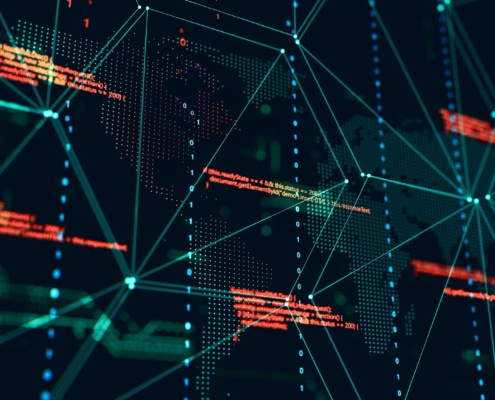Technology is valuable to your business. It helps to increase employee productivity, keeps the business organized, measures financial health, and offers effective ways of communicating. However, technology can only operate as well as your workforce is trained to use it.
Furthermore, your workforce needs processes in place to ensure proper usage to stop or minimize a data breach. Balancing the three pillars of cybersecurity requires an information security plan to overcome challenges.
Cybersecurity Challenges for Large Corporations
Typically, large corporations have the budget and staff to maintain a security operations center. Deploying and maintaining multiple security solutions to address specific threats comes easily with the right amount of resources.
Yet, big security budgets also come with a set of challenges.
For starters, the corporation must consider mounting labor costs to maintain network systems and processes at a large scale. In addition, more users mean endless security alerts, which may cause “alert fatigue” among information technology security professionals with other priorities.
Failing to address this issue can lead to burnout and high turnover. Recruiting and hiring replacements will place more burden on the employees who remain. This scenario can leave the corporation exposed to a cyberattack.
Cybersecurity Challenges for Small and Medium-Sized Businesses
Small and medium-sized businesses do not have the luxury of a large cybersecurity budget. As a result, maintaining a SOC may be out of reach for most. Additionally, hiring and retaining highly skilled IT professionals may come at a cost to other departments and the bottom line.
Lacking in these areas causes a gap in cybersecurity skills. Without internal expertise, these businesses are considered soft targets for cybercrimes. One data breach can damage, or even shutter, the business.
Cybersecurity Challenges for All Organizations
In addition to specific challenges, there are cyber security challenges all organizations face, regardless of size or budget. An organization that lacks a poorly defined or incomplete strategy does not have cohesive processes in place.
Without the ability to investigate, detect and mitigate cyber threats, the organization cannot defend against cybercrimes. Technology cannot protect the organization where people and processes are out of balance.
Fortunately, your business is not without options to overcome cybersecurity challenges. A continually evolving threat landscape, paired with the emergence of artificial intelligence (AI) and machine learning, requires innovation in balancing the three pillars.
Cyber attackers are already using new technologies to find more ways to commit crimes. The goal for you and your IT team is to use these same technologies to build stronger defenses.
For instance, machine learning algorithms can be used to sift through massive data files to uncover anomalies. In addition, real-time discovery gives your business a heads-up to implement defensive strategies before a breach occurs.



